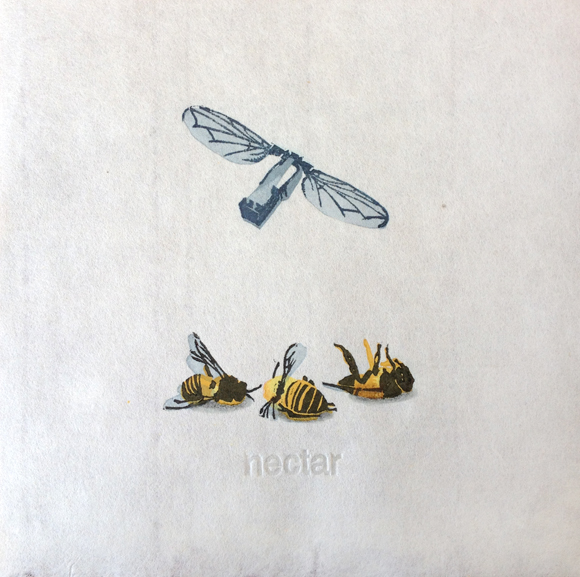SECRET CODEWORDS OF THE NSA: MAGIC LANTERN
woodblock print (mokuhanga)
6" x 6" (152.4 x 152.4 mm)
13 layers of color plus blind emboss on Kochi Kozo paper
edition: 20
Magic Lantern is a software developed by the FBI for logging and recording keystrokes on a computer. Keystroke logging has been used since the 1980s, and there are a number of different types (software, hardware, acoustic, etc.). Magic Lantern, first reported in 2001, is a software-type keystroke recorder that is typically deployed in an email which installs a
trojan horse on the target computer.
 |
| A magic lantern set from the 1890s |
Oh, where to begin. Let's start with the device called a magic lantern. A precursor to the film projector, the magic lantern (laterna magica) was a simple projector that used a concave mirror behind a light source (a candle or oil lamp) to direct light through a rectangular glass slide on which was a painted or photographic image. The light then passed through a lens in front of the slide which added focus to the projection. Although used as an entertainment device, the magic lantern was more often associated with magicians, conjurers, and mediums, who could use the device to project large and convincing images of ghosts and spirits onto smoke or thin gauze.
Which brings us to our 21st century spy agencies. Dear reader, I don't mean to alarm you, but I must inform you: wizards, magicians, and conjurers abound among the employees of our intelligence agencies. Here are just a few examples:
(These look a lot like Girl Scout badges, no?) Personally, I like the Classic Wizard above. If I were a wizard I think I'd be a classic one.
Anyway, just as earlier conjurers were able to use the magic lantern, which was a cutting edge technology in its time, to project their sorcery, a leaked Snowden powerpoint document from a UK surveillance agency reveals that the spy agency wizards and conjurers of our day use their own tactics of deception and altered perception in the online world. Here are a few 'slides' from this leaked presentation, which is called "The Art of Deception: Training for a New Generation of Online Covert Operations." (You can see the entire presentation at
this link.)
Creepy or what? I really get why Teller is holding his face like that.
To end on a lighter note, there's just one more tidbit of information that I came across while researching the magic lantern that I'd like to share with you, and which appeals to me very much as an artist. It seems that during the height of the magic lantern's popularity, the manufacture of lantern slides provided many aspiring artists with steady employment when sales of their own work were insufficient to keep bread on the table.
Maybe the NSA could use artistic help with some of the graphics on their slides and badges…






















